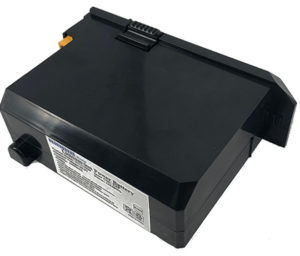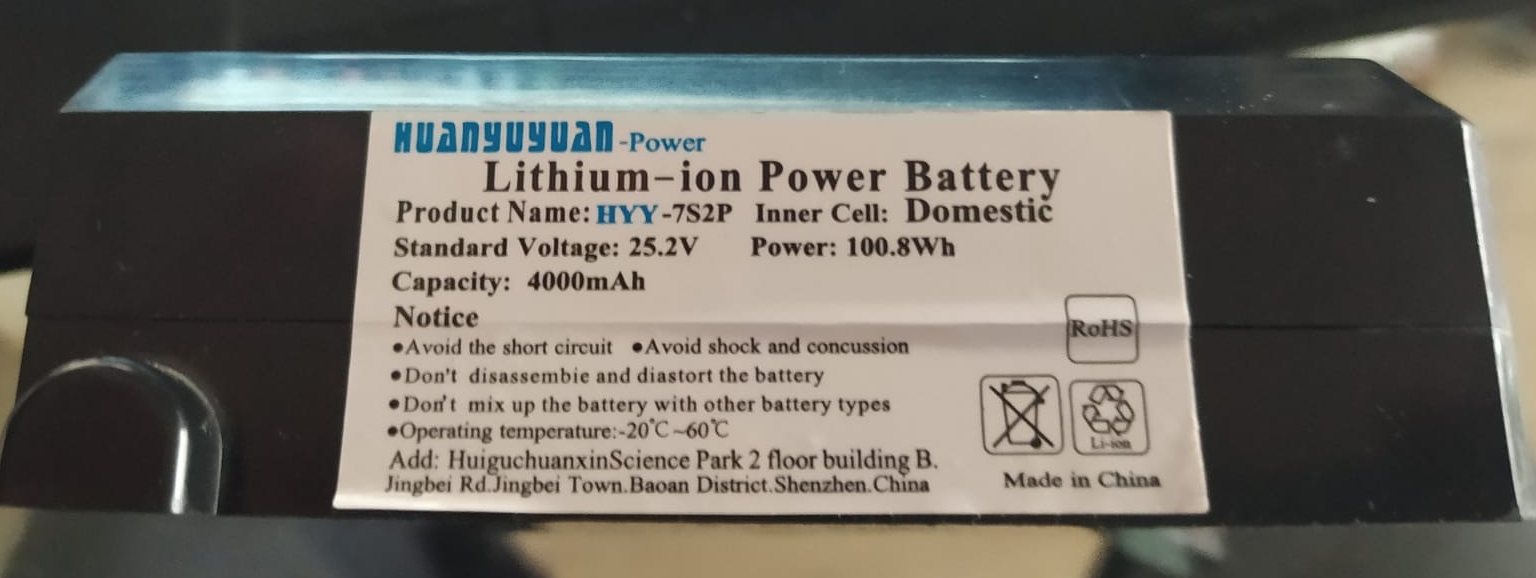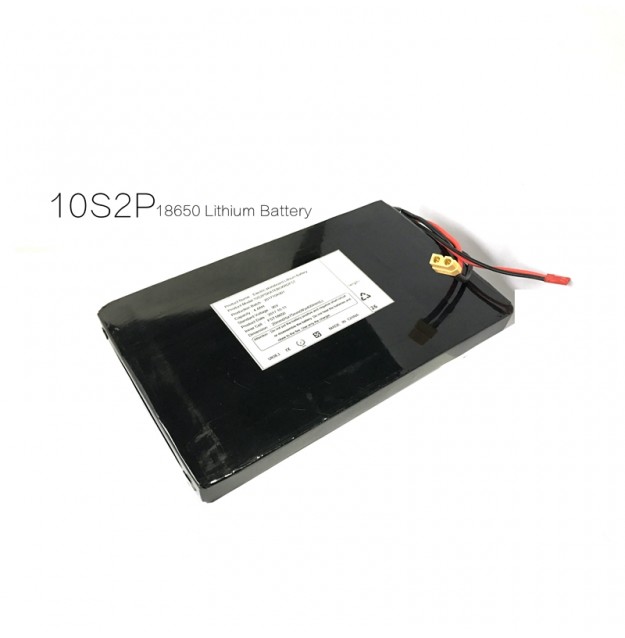Technology
Let’s talk about electric batteries
We all use them, they are in our daily lives, in any device, we find them even in the elements we least imagine, but what do we know about batteries?
In this article, we are going to explain what they are, how they work, what types of batteries we can find on the market, what differences there are between them and the care we must take so that they last as long as possible, then we will focus on the batteries that We use them daily on our Tomahawk skates and they give us such a good time.
Veamos en profundidad ¿Qué es una batería eléctrica?
Basically a battery, also called a cell or electric accumulator, is a set of packaged chemical elements. These elements react with each other, resulting in an electric current. This chemical reaction can be reversible, so the battery can be recharged, or irreversible and it will not be recharged. Normally the batteries we buy for our devices, type AA or AAA, are not rechargeable, so the chemical reaction between its elements It is irreversible and when they are discharged we will have to change them for new ones.
The useful life of the battery will depend on the composition of these chemical elements, as well as its physical characteristics, discharge, voltage and of course its price.
In this drawing we see the parts of a non-rechargeable battery.
Como podemos ver, los componentes químicos empaquetados básicamente son dos, uno el Cátodo o polo positivo, que es una mezcla de carbono y manganeso y Ánodo o polo negativo, que es una pasta de Zinc. Estos elementos reaccionan dando una corriente a través del electrolito, este es de carbono o grafito y hace de nexo de unión entre los demás componentes químicos de la batería y a la vez conduce la electricidad producida hacia el polo positivo. A que no esperabais tener tantos “ingredientes” dentro…
Generally, dry or non-rechargeable batteries will give us a voltage of 1.5 volts, and their capacity depends on the size of the battery, since the larger it is, the more capacity it will have.
There are also battery formats that give us more voltage, for example the 6F22 format, this battery gives us 9 volts.
Aquí vemos los modelos y tamaños típicos de pilas no recargables:
Foto obtenida de https://www.batteries4pro.com/es/blog/26-tailles-et-formats-des-piles-et-batteries
Of course, saying that all batteries, whether rechargeable or not, must be recycled in a responsible manner, most of their components affect the environment and can seriously contaminate water and air. So once used, leave them at a clean point or battery collection point.
Bueno, una vez que sabemos como funciona una pila o batería, vamos a ver diferentes tipos y componentes de las baterías recargables, ya que serán estas las que vamos a usar en nuestros skates eléctricos.
Tipos de baterías recargables por su composición química
Baterías de ácido-Plomo
These batteries are the ones we find in our cars or motorcycles, they are not commonly used in electric skates or electric bicycles, since the weight/power/capacity ratio is not very good. They offer us good power and capacity but a weight that is more than excessive for use in this type of device.
Están compuestas por electrodos o placas de Plomo bañados en ácido sulfúrico que hace de electrolito, generalmente obtenemos voltajes de 12 o 24 Voltios y os podréis imaginar el peso de las mismas, ya que cuanto más plomo lleven, mas capacidad tendrán. ¿Os acordáis lo que decíamos sobre la capacidad de las pilas secas? pues en estas, más de lo mismo, cuanto mas plomo más capacidad y más peso.
Foto obtenida de http://intralogistica.es/?p=135
Baterías de Gel
We can say that these batteries are an update of the batteries previously shown.
The difference here is that the electrolyte, which in lead-acid ones is liquid sulfuric acid, here has been replaced by an electrolyte in the form of a Gel, it is still sulfuric acid but gelled.
As they do not contain any type of liquid, they can physically be placed on their side or on one side without the risk of spillage of any kind. As a counterpart, the weight is a little greater than the previous ones since the gel weighs more.
Foto obtenida de https://www.generatuluz.com/tu-propia-instalacion-aislada/tipos-de-baterias-y-sus-caracteristicas/baterias-de-gel/
Baterías de níquel-Cadmio (Ni-Cd)
These batteries, now obsolete, were the first batteries that offered an acceptable weight/power/capacity ratio. Their format was very similar to that of type C dry cells and they were used in packages made up of several batteries, since a single element gave us a voltage of 1.2 Volts. So to obtain a 12 volt battery we had to make a pack of 10 elements connected in series.
They are formed by Cadmium electrodes bathed in a potassium hydroxide electrolyte.
Ni-Cd battery
The first mobile phone in history, the Motorola DynaTAC 8000X. It had a Ni-Cd battery. It had an autonomy of just over 30 minutes of conversation and charging its battery required 10 hours, this happened back in 1984.
Baterías de Níquel-Metal hidruro (Ni-Mh)
As with gel batteries, these batteries (Ni-Mh) were an update of the Nickel-Cadmium batteries, being composed of a Cadmium anode and a metal hydride alloy cathode. Also out of use today, they were commonly used in portable devices, computers, etc.
Its format was identical to the Cadmium ones but the weight was less.
Estas baterías se utilizaron en el primer vehículo eléctrico del mercado, este fue el sinclair C5, un vehículo súper adelantado a su época, 1985, siglo pasado.
Si queréis mas info sobre este vehículo no dejéis de visitar este enlace.
Batería de Iones de Litio, la batería “casi” perfecta (Li-ion)
This battery is, without a doubt, the most used type today, laptops, telephony, solar energy accumulators, skateboards, electric mobility, all these elements have in common that their batteries use Lithium technology. The weight/power/capacity ratio is clearly the best of all the battery models we have seen. Low weight, high capacity and high discharge power are common features, along with some other virtues such as low self-discharge capacity, which means that if we have them stored for a long time and want to use them again, they will be practically the same. load that we leave them and ready to work. Another advantage is its ease of maintenance. Their voltage per cell is between 3.7 and 4.2 Volts and they can be recharged an average of between 600 to 1000 times without breaking down or losing effectiveness.
Its internal structure is composed of a Lithium Cobalt Oxide Anode and is presented in one to a very thin sheet. The cathode is made of carbon or graphite and is also presented in a very thin sheet. Electrolyte, is an organic solvent in which the anode and cathode are immersed and produces the chemical reaction to make electricity flow to the anode or positive part of the battery.
As you can see here, the battery is made up of very thin sheets, the more of these sheets we have in the cell, the higher its voltage and capacity will be. Between the anode and the cathode, there is a separator, usually made of plastic, to prevent short circuiting.
Here we see “the guts” of a Li-ion 18650 battery, look at the sheets forming layers.
Pero…¿por qué decimos en el título de este apartado batería “casi” perfecta?
Pues decimos esto porque también tienen algunos inconvenientes. Este tipo de baterías no soporta muy bien las temperaturas altas de trabajo, reduciendo considerablemente su vida útil en cuanto a ciclos de carga y descarga. No obstante el rango de temperatura de trabajo es bastante amplio de -20 a 60ºC.
También debemos considerar que no se deben descargar nunca por debajo del 15%, ya que corremos el peligro de deteriorar la batería para siempre, aunque con los sistemas de protección de los que hablaremos luego, BMS o Battery System Management, será muy difícil llegar a vaciar la batería por completo.
Todos los skates eléctricos de nuestra marca utilizan este tipo de baterías de última generación.

Here we see the battery of the Wind model from Tomahawk Skateboards, undoubtedly one of the best electric skates for the city.
La nomenclatura de las baterías (Li-ion) viene determinada por un número que está relacionado con las medidas de la celda.
In this photo, we see 1 cell of a Samsung model 18650 battery, the first two numbers, 18, indicate its diameter of 18 mm. Next, the number 65 indicates its net length (65 mm). The total length of this battery with head and protections included is 66.5 mm.
The capacity of these batteries varies from one model to another but are usually between 2100maH and 4000maH.
Without a doubt, this cell is the best we can find on the market, for this reason Tomahawk only uses this type of battery.
¿Qué baterías utilizan nuestros e-skates?
Pues como ya hemos comentado antes, todos nuestros skates solo utilizan paquetes de baterías formadas por módulos de la marca Samsung 18650. En nuestro Skate Wind, encontramos la batería que mostramos.
We will also have an identification label on which the following data will appear:

Composición 7S2P : Lithium-ion
Voltaje: 25,2 V
Capacidad: 4000mAh
Potencia: 100,8 Wh
¿Qué nos quieren decir cuando nos encontramos esta combinación de letras y números, 7S2P?
Como ya hemos comentado, los paquetes de baterías están formados por módulos, en este caso del modelo 18650. Tendremos 7 elementos conectados en Serie, de modo que obtendremos 3,7 Voltios multiplicado por 7 elementos, 25,9 voltios en total y cada serie estará formada por 2 elementos conectados en paralelo de esta manera tenemos una capacidad de cada elemento de 2200 Mha, multiplicado por 2 elementos, 4400 Mha. Tenemos una batería de 25,9 Voltios y 4400 Mha en total.
En nuestro modelo Hatchet, las baterías son de 10S3P, de modo que tendremos 10 elementos en serie y por cada serie 3 elementos en paralelo, 37,2 Voltios y 6600 Mha.
Cuando conectamos baterías en serie multiplicamos el voltaje por los elementos que componen la serie.
When we connect in parallel we multiply the amperage or capacity of the battery by the elements connected in parallel.
Cómo protegemos y cuidamos nuestras baterías
Como habéis podido leer antes, para cuidar nuestras baterías solos deberemos seguir unas pautas muy fáciles que sin duda nos ayudarán a tenerlas en el mejor estado posible.
As a rule, before leaving, we will charge our battery, thus making sure that we will have the maximum capacity and the possibility of total discharge will be less.
Comprobaremos de vez en cuando la temperatura, sobre todo en los días de calor, solo con tocar por encima del paquete, nos daremos cuenta de si están muy calientes, en este caso será muy recomendable esperar un ratito a que se bajen de temperatura. Acordaros que una temperatura aceptable será en torno a 45º.
Cuando afrontemos una cuesta pronunciada y si ya hemos hecho algunos kilómetros con nuestro patín, es conveniente no forzar la velocidad o potencia, ya que ante una descarga grande el BMS cortará la alimentación al skate por seguridad y nos quedaremos sin energía momentáneamente.
¿Qué es eso del BMS?
All battery packs have an electronic system that protects them from overcharges and over-discharges, this system is called BMS Battery Monitoring System.
It works as follows, when a battery cell reaches its maximum voltage, 4.7 Volts, the BMS is responsible for disconnecting that cell from the load, avoiding overcharging and at the same time making all cells have the same voltage. .
Image of a BMS
When the system is discharging, the BMS acts by cutting off the discharge, when the battery pack reaches a minimum voltage, it is usually 2.9 Volts per cell, thus protecting the entire battery from over-discharging and its total deterioration.
Terminamos con un poquito de historia y un pequeño experimento
En 1775, la pila de Alessandro Volta, inventor de la batería que el científico dio a conocer mundialmente en una carta enviada al presidente de la Royal Society de Londres, consistía en una serie de pares de discos (apilados) de zinc y de cobre (o también de plata), separados unos de otros por trozos de cartón o de fieltro impregnados de agua o de salmuera, que medían unos tres centímetros de diámetro.
Hoy en día podemos recrear su experimento, os dejo un video: https://www.youtube.com/watch?v=vIHfUJu3aKo
En 1866, Georges Leclanché inventa en Francia la pila Leclanché, precursora de la pila seca (zinc-dióxido de manganeso), sistema que aún domina el mercado mundial de las baterías primarias. Las pilas alcalinas (de «alta potencia» o «larga vida») son similares a las de Leclanché, pero, en vez de cloruro de amonio, llevan cloruro de sodio o de potasio.
In future articles we will talk about the new generations of Li-fepo4 batteries, or lithium Ferrous or Ferrophosphate. Without a doubt, this technology is the future and we will begin to see it in our skates in a short period of time.
No os olvidéis que desde Tomahawk os podemos asesorar en todo lo que necesitéis para vuestros skates, además contamos con la última tecnología en baterías, motores, mandos a distancia y cualquier cosa que podáis necesitar, echad un vistazo periódicamente a nuestra web.

